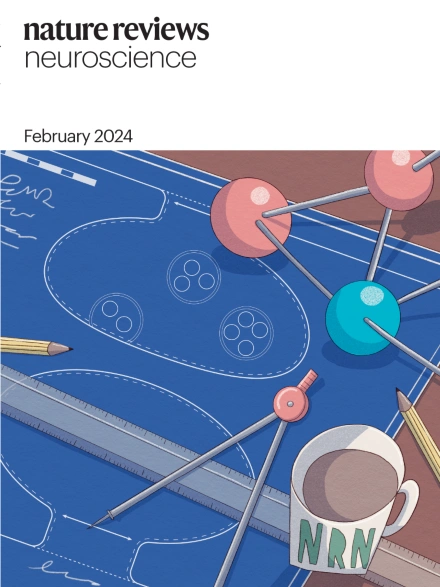心脏神经系统的神经胶质。
IF 26.7
1区 医学
Q1 Neuroscience
引用次数: 0
摘要
心脏通过与大脑的双向互动来适应不断变化的生理需求。这些是通过心脏自主神经系统的广泛反馈回路介导的,这是一个由神经元和胶质细胞组成的复杂网络。尽管神经胶质细胞在心脏及其神经系统中的存在已经被发现了几十年,但直到最近才对它们在心脏生理学和病理生理学中的作用有所了解。随着新型心脏胶质细胞的发现,很明显,它们代表了心脏神经系统不同解剖位置的异质细胞群,不仅有助于健康心脏的自主控制,而且有助于患病心脏的病理改变。本文章由计算机程序翻译,如有差异,请以英文原文为准。
Glia of the heart's nervous system.
The heart adapts to changing physiological demands through bidirectional interactions with the brain. These are mediated via extensive feedback loops of the cardiac autonomic nervous system, a complex network of neurons and glial cells. Although the presence of glia in the heart and its nervous system has been known for decades, only recently has an understanding of their contribution to cardiac physiology and pathophysiology emerged. As new types of cardiac glia are discovered, it becomes evident that they represent heterogeneous cell populations in distinct anatomical locations of the cardiac nervous system, contributing not only to autonomic control of the healthy heart but also to pathological changes in the diseased heart.
求助全文
通过发布文献求助,成功后即可免费获取论文全文。
去求助
来源期刊

Nature Reviews Neuroscience
医学-神经科学
CiteScore
35.00
自引率
0.60%
发文量
104
审稿时长
6-12 weeks
期刊介绍:
Nature Reviews Neuroscience is a journal that is part of the Nature Reviews portfolio. It focuses on the multidisciplinary science of neuroscience, which aims to provide a complete understanding of the structure and function of the central nervous system. Advances in molecular, developmental, and cognitive neuroscience have made it possible to tackle longstanding neurobiological questions. However, the wealth of knowledge generated by these advancements has created a need for new tools to organize and communicate this information efficiently. Nature Reviews Neuroscience aims to fulfill this need by offering an authoritative, accessible, topical, and engaging resource for scientists interested in all aspects of neuroscience. The journal covers subjects such as cellular and molecular neuroscience, development of the nervous system, sensory and motor systems, behavior, regulatory systems, higher cognition and language, computational neuroscience, and disorders of the brain. Editorial decisions for the journal are made by a team of full-time professional editors who are PhD-level scientists.
 求助内容:
求助内容: 应助结果提醒方式:
应助结果提醒方式:


